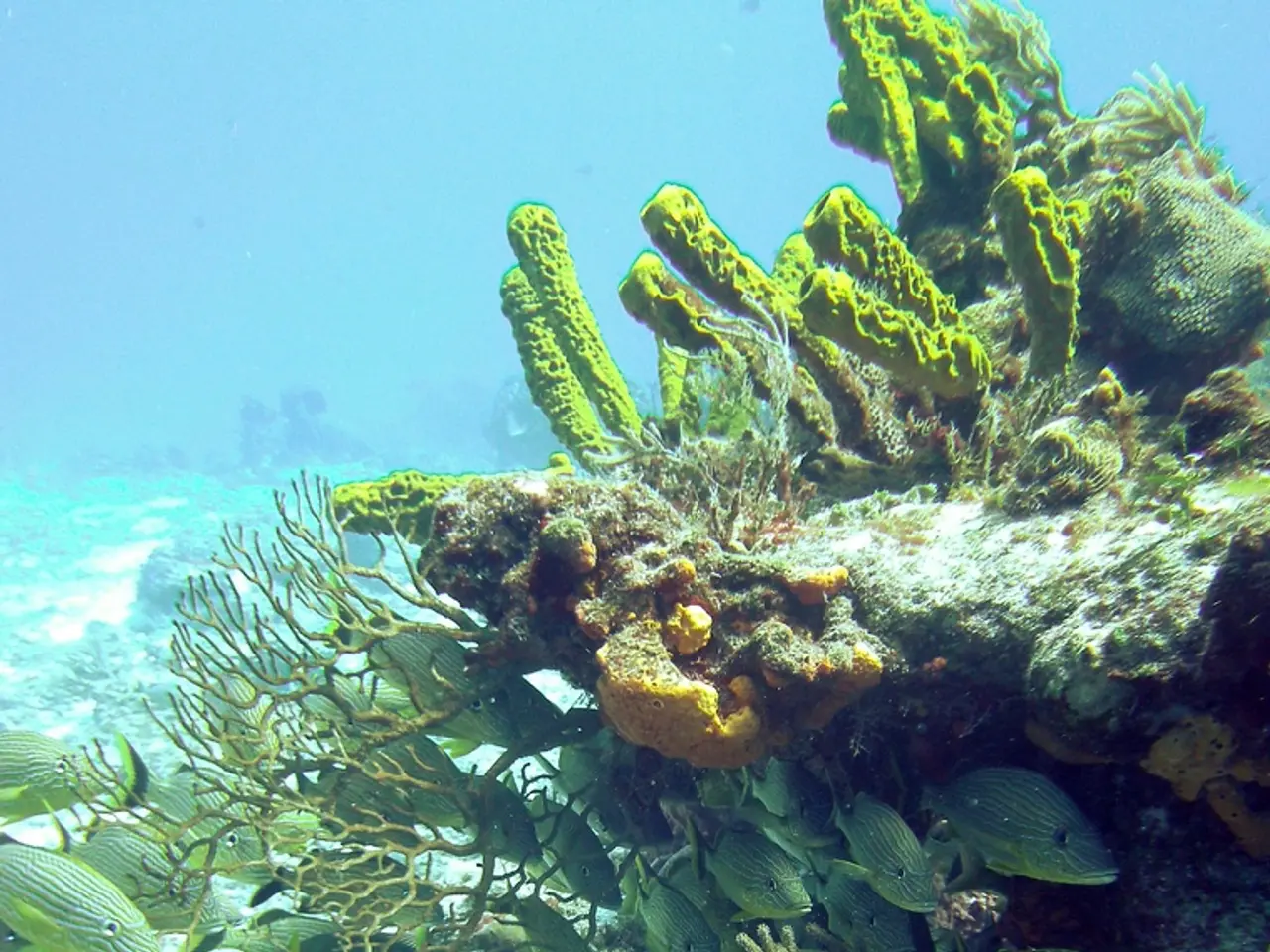Satellite-based depth mapping data - A hydrographic tool that's too crucial for surveyors to overlook, with three decades of usage under its belt
Satellite Derived Bathymetry (SDB) is increasingly becoming an essential tool in hydrographic charting, particularly for large-scale shallow water mapping. This innovative method uses multi-spectral satellite imagery, such as from Sentinel-2 and Landsat, to estimate water depths by analyzing light penetration through water [1][2][4].
Advantages over Traditional Methods
Compared to traditional hydrographic surveying methods like echo sounders and LiDAR, SDB offers several advantages. It is generally much more cost-effective due to the use of freely available or low-cost satellite data and no need for ship time or equipment deployment [1][2][3]. Additionally, SDB enables rapid coverage of large, remote, or difficult-to-access shallow areas, making it ideal for frequent monitoring and regional/global mapping initiatives like Seabed 2030 [3][4].
However, it's important to note that the accuracy of SDB can vary depending on conditions. It is typically good to very good in clear, shallow, and calm water with stable conditions and moderate depths (typically up to 20-30m), but less accurate under turbid waters, deeper depths, or complex benthic environments [1][2][4].
Current Status and Developments
The technology and methodologies for SDB are rapidly advancing. For instance, physics-guided deep neural networks are improving bathymetric mapping accuracy at regional scales [1]. Recent studies also validate SDB accuracy across multiple environments and tidal regimes, increasing confidence in its operational use for coastal monitoring [4].
Training and capacity building programs, such as the Western Indian Ocean SDB training under IOC-UNESCO, aim to expand user expertise and support the integration of SDB into routine hydrographic workflows globally, aligned with efforts like the UN Decade of Ocean Science and Seabed 2030 [3].
Calibrations and validation using Landsat and Sentinel data are actively maintained by agencies like USGS to ensure data quality and consistency [5].
Limitations and Solutions
To solve the depth equality, the analyst disposes of a limited set of equations provided by the sensor's spectral bands, five at the most. However, the main drivers for using SDB are the need for full bottom coverage, the ability to provide horizontal precision comparable with ship's positioning systems, and the provision of a reliable image-based alert system.
Conclusion
While SDB is not a full replacement for traditional bathymetric surveying, it is a highly cost-effective and efficient complement for shallow water and large-area mapping. It supports frequent updates and fills coverage gaps where vessel surveys are impractical, while traditional surveys remain indispensable for detailed, high-accuracy charting and deep-water navigation safety. The ongoing improvements in algorithms, data availability, and training foster broader use of SDB in operational hydrography worldwide [1][2][3][4].
References:
[1] Dolou, A., et al. (2020). Thirty years of satellite derived bathymetry - The charting tool that hydrographers can no longer ignore. The International Hydrographic Review, 46(2), 111-124.
[2] Stumpf, R., et al. (2003). Satellite-derived bathymetry: A review of methods. Coastal Engineering, 50(11), 1109-1150.
[3] Laporte, J., et al. (2021). Advancing satellite-derived bathymetry for operational hydrography in the Western Indian Ocean. Ocean and Coastal Management, 192, 106747.
[4] Avis, N., et al. (2021). A review of satellite-derived bathymetry for coastal and ocean applications. Remote Sensing, 13(17), 3105.
[5] USGS (2021). Sentinel-2 Level-2A Product User Guide. Retrieved from https://sentinels.copernicus.eu/web/sentinel/user-guides/sentinel-2-l2a-product-user-guide
- With the growth of technology in environmental-science, nautical charting has significantly benefited from advancements in hydrographic survey, such as satellite-derived bathymetry (SDB), which is increasingly being used for large-scale shallow water mapping.
- As stated in scientific studies, nautical charting using SDB offers advantages over traditional methods like echo sounders and LiDAR, primarily in terms of cost-effectiveness, rapid coverage of large areas, and ideal applicability for frequent monitoring and global mapping initiatives.
- The integration of SDB into routine hydrographic workflows worldwide is being supported through training programs like the Western Indian Ocean SDB training under IOC-UNESCO, aimed at expanding user expertise and increasing confidence in its use for coastal monitoring with the help of technology.




